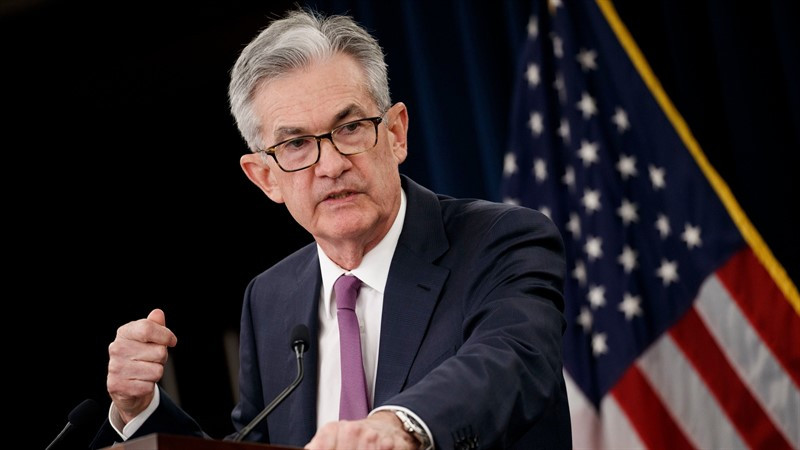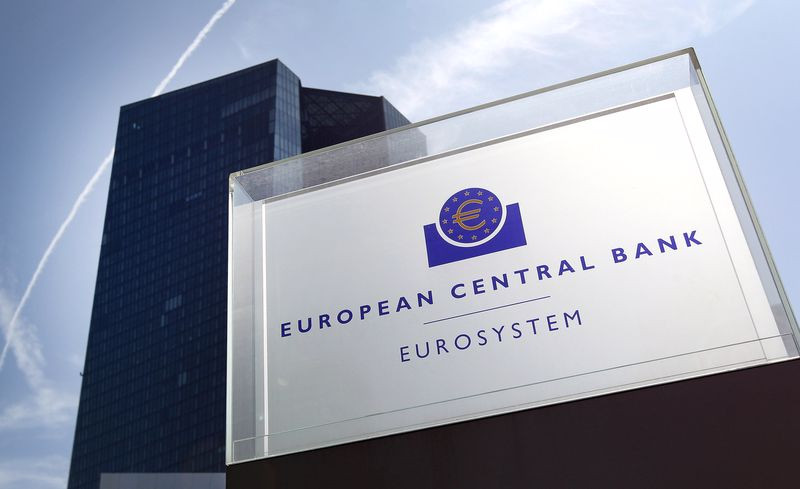
The greenback fell for the third consecutive day on Tuesday, retreating from a 20-year high against a basket of major currencies by more than 1.5%.
The decline in investor interest in safe haven assets made it difficult for the dollar to find demand.
Against this background, the EUR/USD pair jumped by 1.1%, marking the largest one-day increase since March.
Key Wall Street indexes also ended yesterday's trading with a sharp increase. In particular, the S&P 500 rose 2.02% to 4,088.85 points.
The broad rally in stocks on Tuesday followed weeks of stock market sell-offs that saw the S&P 500 sink to its lowest level since March 2021 last week.
Investors were encouraged by data that showed that retail sales in the United States increased by 0.9% in April. At the same time, the March indicator was revised upward – from 0.5% to 1.4%.
A separate report showed that industrial production in the country accelerated by 1.1% last month against the projected growth of 0.5%.
These releases spurred demand for risky assets to the detriment of the protective dollar, as investors decided that expectations of an imminent recession look exaggerated, and the US economy will be able to cope with the tightening of the Federal Reserve's monetary policy, which started in March.
The greenback cut losses after Fed Chairman Jerome Powell said that the central bank is determined to ease inflation in the United States, which is at a 40-year high.
Recall that in April, the consumer price index in the country expanded by 8.3% year-on-year, which is more than four times higher than the Fed's target. At the same time, the base PCE increased by 0.6% last month, which turned out to be higher than the expected 0.4% and continued to indicate the spread of inflation in the economy.
Too high inflation not only reduces the purchasing power of households and contributes to a drop in company incomes, but also undermines confidence in the central bank.
This explains the sense of urgency experienced by Powell and his colleagues.

Powell's remarks strengthened market participants, this is because of his opinion that the key rate will reach at least 2.75%-3.00% by the end of this year and possibly even more, steadily increasing from the current range of 0.75%-1%.
But if inflation doesn't fall? Powell said that the Fed will not back down from raising rates until it happens.
"We need to see that the inflation rate is decreasing in a convincing way. Until we see this, we will continue to act," said the chairman of the US central bank.
Powell promised that the central bank would raise interest rates as high as necessary, including raising rates above the neutral level.Fears that price pressure will remain high are forcing the Fed to act ahead of the curve. The central bank is trying to contain prices by cooling the economy.
It is unclear to what level FOMC officials plan to raise rates. If inflation does not show a steady decline in the foreseeable future, the central bank on the horizon of 12-15 months may raise rates to 4%, not 3%, as previously assumed.
The increase in the Fed's discount rate is positive for the US currency. However, high rates are very unfavorable for the stock market, which has grown significantly during the pandemic.
It should be understood that an increase in the base rate entails an increase in mortgage rates, credit cards and all other borrowings, which limits economic activity.
"The American economy is undoubtedly heading for a recession. It will be difficult to avoid some kind of recession," Wells Fargo strategists believe.
At the same time, they indicate that both consumers and businesses are quite strong from a financial point of view in many indicators.
"The fact that everyone is so strong now gives hope that the recession, if it happens, will be short and not so deep," Wells Fargo reported.
Goldman Sachs urges investors to prepare for a recession, emphasizing that the American economy is becoming less likely to have a "soft landing".
According to the bank's strategists, the US stock market has the potential for further decline.
They lowered the target for the S&P 500 index by the end of the year from 4,700 to 4,300 points.
Experts cited a slowdown in economic growth and an increase in interest rates in the United States as the reasons for the deterioration of the forecast.
If a recession occurs next year, the S&P 500 index will continue to decline to 3,600 points, according to Goldman Sachs.
The US dollar, as a rule, strengthens in anticipation of a recession and falls when it really begins, the bank's analysts say.

Fed officials hope they can raise interest rates and slow growth enough to cool inflation without triggering the painful cuts that the central bank has used in the past to keep prices down.
The latest data on retail sales, employment and industrial production indicate an economy that, by itself, remains unshakable in the face of higher borrowing costs.
This allows the Fed to remain the most hawkish central bank in the world, which still has enough reasons to act aggressively."Recent statements by Powell's comments served as a reminder to the market that the Fed is going to raise interest rates, probably at a very accelerated pace, in order to restore confidence in itself on the inflation front," Rabobank analysts said.
"The Fed's hawkish attitude is the reason that market sentiment looks a little more fragile today than yesterday," they added.The main US stock indexes are noticeably declining on Wednesday, losing about 2.5% on average.
If on the eve of the key Wall Street indices rose by almost 2% on general optimism, now this optimism has again been called into question.
Investors fear that economic growth may not be stable enough yet to avoid going into recession due to high rates.Analysts expect the US stock market to remain highly volatile in the near future.
"With a bearish trend in the market, reversals happen quite often, and it is difficult to trade in these conditions," Morgan Stanley strategists said.
They predict that by the end of this year, the S&P 500 index will reach 3,900 points, and this means its further decline. The index value has already decreased by 16% since the January peak.
Tracking the cautious market sentiment, the greenback recovered on Wednesday after showing the biggest one-day decline (by 0.85%) in two weeks the day before.
The recent correction of the dollar was primarily due to technical factors, and allowed it to move away from the overbought area. The fundamental picture continues to favor the US currency.
At least, the geopolitical crisis that broke out in eastern Europe and fears about the health of the global economy have not disappeared anywhere.
The dollar managed to attract bulls on the decline to the area of 103.20. Today it is trading in positive territory near 103.70, adding about 0.3%.
Due to the weakening of the risk appetite and the strengthening of the greenback with a broad front, the EUR/USD pair lost its bullish momentum.
Having touched an almost two-week high at 1.0560, it was under pressure.

"We believe that the markets are putting too much tightening in prices by the ECB, and we expect that the topic of growth divergence on both sides of the Atlantic, aggravated by the confrontation between the EU and Russia on commodities, will become more relevant in the summer," ING analysts noted.
"We suspect that any further EUR/USD rally may begin to weaken around 1.0650–1.0700, while the risks of a return below 1.0500 in the near future will be quite significant," they added.
Money markets now expect a rate hike in the eurozone by as much as 108 basis points before the end of the year.
More and more ECB policymakers are banging the drum, calling for an interest rate hike in the coming months.
The head of the central bank of Finland, Olli Rehn, said that the ECB should exit the negative interest rate zone relatively quickly to avoid unreasonable inflation expectations, while Pablo Hernandez de Cos of Spain said that rates are likely to start rising at the beginning of the third quarter.
Eurostat today reported that annual inflation in the eurozone reached a record high of 7.4% in April, although this figure was revised downward from a preliminary estimate of 7.5%.
These data did not provide significant support for the EUR/USD pair.
The fact is that the Fed's reaction to the surge in inflation turned out to be much more hawkish than its European counterpart.Powell said the day before that the FOMC had almost reached a consensus on raising the rate by 50 bps at the next two meetings.At the same time, some ECB officials still question the justification for raising rates.
The minutes from the ECB's April meeting will be published tomorrow. If the document does not indicate the real possibility of the central bank raising rates in July, the pressure on the euro will increase.
"The initial support for EUR/USD is expected at 1.0482, and the 1.0432-1.0428 area should stand so that the pair can maintain the current upward slope. Its breakthrough may clear the way for a retest of the 1.0350-1.0341 area," Credit Suisse strategists said.
"Short-term resistance is observed at 1.0593-1.0599. Next comes the more important area of 1.0620–1.0642 (the Fibo level is 23.6% of the fall correction since February and the May high). Its breakthrough will give grounds to assume that the short–term basis has already been formed and now the pair can begin a stronger recovery to 1.0758-1.0787 (the Fibo level of 38.2% correction and the lows of mid-April). This barrier will be much tougher if the pair reaches it at all," they added.
 English
English 
 Русский
Русский Bahasa Indonesia
Bahasa Indonesia Bahasa Malay
Bahasa Malay ไทย
ไทย Español
Español Deutsch
Deutsch Български
Български Français
Français Tiếng Việt
Tiếng Việt 中文
中文 বাংলা
বাংলা हिन्दी
हिन्दी Čeština
Čeština Українська
Українська Română
Română

